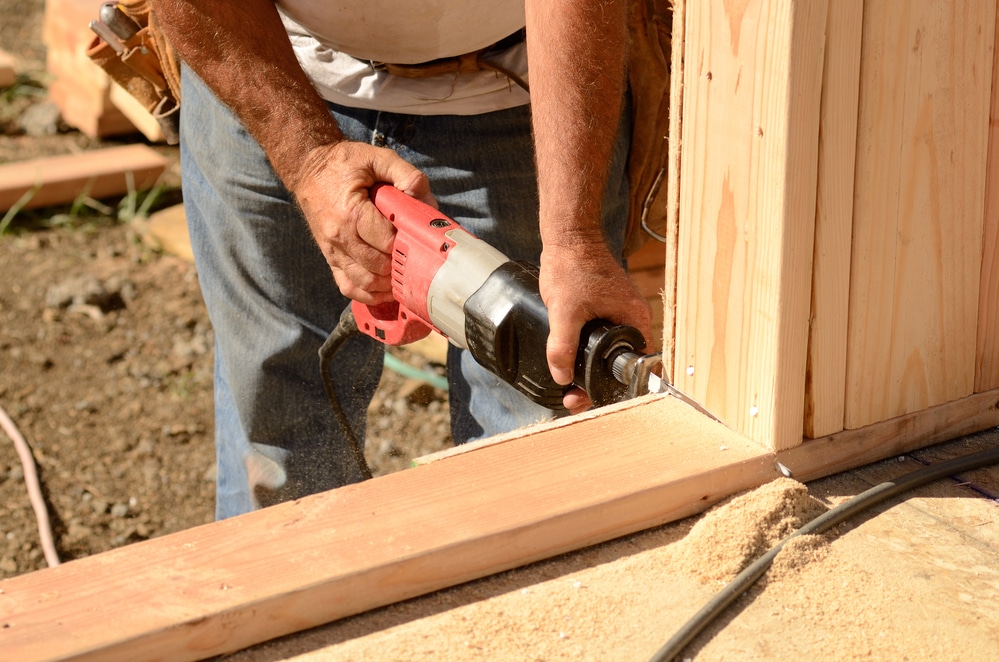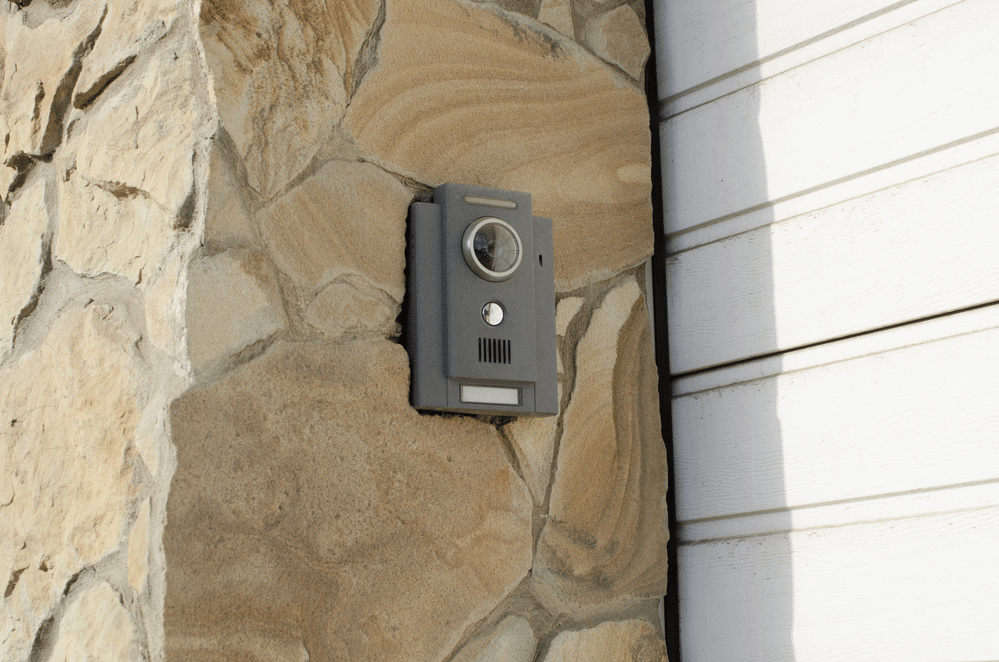Last Updated on
So, what is a reciprocating saw? Despite the fact that you may have heard this term before, you probably know very little about reciprocating saws.
Well, that’s all about to change as we will delve into the world of the reciprocating saw to make sure you then know everything that there is to know about it.
The Basics of the Reciprocating Saw
A reciprocating saw is easily recognised because it comes with a saw blade that is operated in a back-and-forth motion. This power tool can be utilised in a variety of applications and to cut a wide range of materials. However, we will explore those situations later.
If you want to have a better understanding of its appearance, then think along the lines of an electric carving knife. The saw blade is horizontal, and it comes with a coarse blade that can easily cut through various materials and items thanks to the power of the saw.
Also, you may see reciprocating saws being referred to as sabre saws, and if you do, it’s still referring to the same thing as we are describing here.
Your Options With Reciprocating Saws
With a reciprocating saw, you have two options. It can be wired up to the mains, or you can opt for cordless reciprocating saws. To be honest, the cordless reciprocating saw may prove to be the best option due to the functionality of the saw in itself.
Where You Would Use a Reciprocating Saw
Before moving on to explain more about how a reciprocating saw works, let’s quickly mention where you could be using this particular power tool.
The first thing to know is that reciprocating saws are primarily used more for demolition work than trying to do something with a bit of finesse. A reciprocating saw blade is rougher and more intense than what you would even get with a circular saw.
The saw blade here is almost the complete opposite of a fine-tooth blade. That is why reciprocating saw blades are more in tune with ripping into things where you want a saw blade with some brute force behind it.
To be honest, the list of situations where items such as cordless reciprocating saws will be useful is rather extensive. However, let’s check a few out to show you where this saw can be the right blade for the job at hand.
Cutting Through Joists and Plasterboard
Cutting through the likes of joists or plasterboard can be tough. However, a reciprocating saw makes it so much easier to cut wood or other materials.
In fact, when it comes to the best tools for this job, then you would be hard-pressed to find something better than a reciprocating saw.
Also, with joists, there’s no need for you to worry about the crawl space to get into the right position to saw through the wood. You can use this tool in an upright manner, and it will still saw through the wood with ease. In that sense, this is one of the most versatile tools out there.
Cutting Out Door Frames
Dealing with door frames is another one of those construction projects that will be tailor-made for this sort of saw. Once again, you don’t need to worry about accurate cuts. You can simply get the tool and start cutting.
Replacing Windows
When replacing windows, one of the hardest parts of the job is removing the old fittings. There’s no need for precise cuts either, so this is the best tool for bursting through the wood facings and getting them off and out as quickly as possible.
Pruning Trees
Move away from demolition in the home for a bit; a reciprocating saw is also a good idea if you want to start pruning trees. The reciprocating saw blade is the perfect solution for getting through that tough wood, and it will do so with ease.
Of course, you can go ahead and use reciprocating saws for a multitude of other jobs, but the main point being made here is that it is all connected to doing rough work that does not require you to be nice and smooth with the cutting.
How This Tool Works
So, how does the reciprocating saw work? Well, it was mentioned earlier how reciprocating saw blades work in a back-and-forth manner.
It’s generally powered by a lithium-ion battery, but if you plan on doing a lot of cutting with the tool, then you should seriously consider getting a corded version. It is simply due to the length of time that the battery is going to hold a charge.
The Blades
This saw comes with a variety of blades that can be interchanged. These blades will be perfect for a wide variety of jobs. Whether you are cutting stone, metal pipes, pruning trees, cutting through wood, or ceramic tile, the number of materials that can be cut with this particular tool far outstrips what’s possible with any other saw.
As you can see, a reciprocating saw can be used in many different ways, and with a range of blades available, it does mean you can chop and change how you use a reciprocating saw. Just keep in mind all of the safety issues, so wear safety glasses and ear protection at the very least.
Thanks to the blades that come with reciprocating saws, your demolition work is going to prove to be a whole lot easier than you thought. However, don’t plan on using this on finished walls, or you will make a mess of things, so steer well clear in that situation.
The Shoe
With a reciprocating saw, you will want to take advantage of the pivoting shoe at different times. This part of the saw is designed to allow you to rock backwards and forward with the saw without the saw blade itself being lifted up off whatever you are cutting.
It is such a cool thing as it does mean you can effectively hack your way through rough cuts without worrying about losing the spot where those metal teeth on the blades are working away.
For this, you simply need to push the shoe forward to engage it and then fire up the blade, and you will be good to go.
The Cuts
With a reciprocating saw, you will not get those smooth cuts that you require when finishing a project. This is all about cutting through items, with other saws being used for more finesse.
However, let’s get one thing straight.
When you have the right blade installed on your reciprocating saw, the range of jobs it can do will be impressive, and that also goes for the different cuts it can produce.
If you are looking to get through some pipes in no time, then the sheer power of this tool, along with the sharp blade, will slice through with a relatively smooth cut for its purpose. It won’t produce too many spurs that you then need to deal with, but that’s why having a selection of different blade options is the best thing to focus on when owning a reciprocating saw.
But we can quickly look at a couple of types of cuts that are possible with a reciprocating saw.
Plunge Cuts
With a large blade in place, you will find that a plunge cut is very easy to do with a reciprocating saw. In fact, while most saws would struggle with cutting through the likes of plasterboard using this method, this saw will not find it difficult.
This is perfect for cutting out sections of walls, and various blades are designed for this very purpose.
Curved Cuts
The reciprocating saw can also be used for curve cuts. It is ideal if you are cutting out an arch as part of a project, and as with everything else connected to this saw, it’s all possible if you have the correct blade in place.
A curve cut will require a curve blade, and there are a number of them out there on the market that will be perfect for this type of saw.
How to Use Your Reciprocating Saw
But let’s quickly run through how to correctly use your reciprocating saw to give you some insight into why you should perhaps consider adding this to your tool kit.
So, let’s say you want to break through some old door frames in this instance.
Getting Started
If you have a problem getting started with the cutting, then using a power drill to create your starting hole is best. That will allow you to slide the longer blade of the reciprocating saw into that hole, and then the machine can get to work.
Power Is Everything
The power of this saw is everything with a cordless reciprocating saw. However, do remember the limit of the battery with the cordless version. If you have a big job to do, then having one plugged into the mains is essential.
Safety Is Important
As we are talking about a saw used for demolition purposes, it stands to reason that pieces of wood or other material could go everywhere. That is why safety will be important, but then that should apply to any sort of DIY project.
Wear hearing protection as well as protect your eyes. Other safety tips include clearing space to work in, having good ventilation for dust, avoiding trip hazards, and having a clear idea of what you are doing and can access whatever you are cutting without stretching.
Planning Is Also Key
Remember, you will probably be using this tool at the start of a project to clear the way for finer work later on. These saws are tough, rough and can cut through almost anything with the teeth on the blade.
But like we have said before, you need to have the correct blades. Look at adding a selection that can be changed as and when required. Make sure you have those blades in place before you start, and study the different materials that can be cut with the blades you own.
The metal teeth on a blade designed to cut metal pipes will be completely different from that with plasterboard. It has a different density when it comes to the material, and it requires more power to deal with metal, but normal saws would struggle with either option, which is why having a reciprocating saw is such a good idea.
Is It an Essential Tool?
The reciprocating saw will be one of those tools where it is indeed essential, but only if you have the correct blade for the correct job. It is so easy to use, as you don’t have to worry about making a mess of things when you use a reciprocating saw, thanks to the jobs it is designed for.
In minutes, it can open up tight spaces, while the design of the tool is such that it can easily cut through various materials without taking up a lot of space itself.
Get Your Reciprocating Saw
So, if you are looking at doing a real demolition DIY project, then make life easier for yourself by using a reciprocating saw. It really will make a huge difference.
So, what is a reciprocating saw? Knowing what it is is just the first step. We hope this has been useful!
Paul is the type of person who never met a problem he couldn’t fix. He can always be found tinkering with something in his house, even if it isn’t broken! His tips and tricks are often shared on our site. He’s the one you call when something breaks because he has been known to improvise fixes for everything from leaky faucets to malfunctioning dryers.



